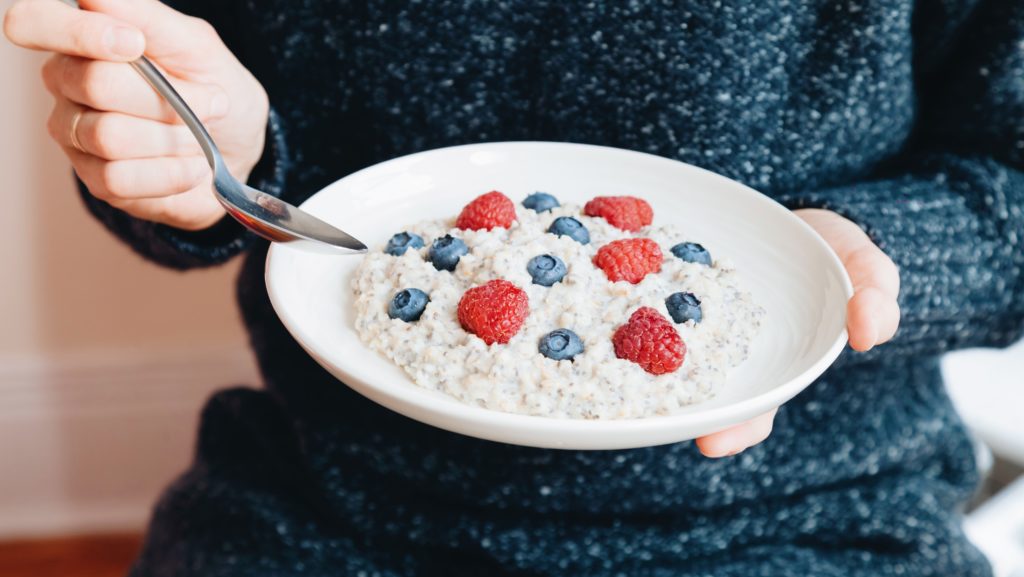Winter is here, and this year feels different for a variety of reasons. The ongoing pandemic has many of us reconsidering the usual plans to travel home for the holidays, amplifying the feelings felt during the most stressful time of year. And that’s on top of the dread of watching the sun peace out at around 4:30pm every day. While there’s not much we can do about the darkness, there are a number of actions we can take to ease Seasonal Affective Disorder, also known as SAD. Here are the best foods for fighting the winter blues naturally.
Why Do We Get Sad in Winter?
In most cases, SAD emerges around late fall and early winter every year. According to the Mayo Clinic, symptoms include oversleeping, fatigue, change in appetite (especially cravings for food that are high in carbohydrates), and weight gain. Symptoms may start out mild and get worse as the season progresses.
The exact causes of SAD are unknown, but doctors have an idea of what might trigger it.
“In the winter, there’s a decrease in sunlight. And it’s thought that this could cause a drop in serotonin, a brain chemical that affects your mood,” Amy Gorin, MS, RDN, a plant-based registered dietitian and owner of Plant-Based Eats in Stamford, CT, tells LIVEKINDLY.
This in turn can trigger depression. Shorter days may also disrupt your circadian rhythm (your body’s internal clock) as well as the body’s level of melatonin, which affects your sleep patterns and mood.

The Best Plant-Based Foods for the Winter Blues
Everyone has days where they feel down, but it’s important to monitor your symptoms. The Mayo Clinic notes that you should see a doctor when you feel unmotivated to partake in activities that you normally enjoy, especially if you’re experiencing the above symptoms or thinking about suicide or self-harm.
Gorin notes that some foods can help lift your mood. but again, seeking professional help is best as the first course of action. Left untreated, symptoms of SAD may worsen.
1. Carb-Rich Foods
“A reduction in serotonin caused by the winter blues could lead to cravings for carbs, as consuming carbohydrates can increase your body’s release of serotonin,” says Gorin. “When reaching for carbs, choose fiber-rich options such as oats, quinoa, fruits, and vegetables.”
Whole grain rice, pasta, and bread are also choice options. Oh, and potatoes — just keep the skin on, as that’s where approximately half of the dietary fiber and the majority of nutrients (like potassium and vitamin C) are found. Choosing carb-rich, high-fiber foods has an extra boon: dietary fiber helps maintain bowel health, lowers cholesterol levels, and helps reduce the risk of cardiovascular disease.
2. Protein-Rich Foods
Eating protein-rich foods releases dopamine, a neurotransmitter associated with feelings of pleasure as part of the reward system and feelings of motivation. Eating low-fat, protein-rich foods can also give you more energy — a huge plus for anyone who struggles with sluggishness in winter. Choose foods that are rich in plant protein and low in fat (i.e., tofu, tempeh, beans, and legumes) and combine them with whole grain carbs like brown rice, whole wheat pasta, and wheat berries, for a filling, energizing meal. (See here for the top vegan sources of protein.)
3. Berries
Blueberries, strawberries, cranberries, and raspberries are rich in vitamin C and antioxidants. That helps control cortisol, your body’s primary stress hormone that puts a stopper on functions that are not essential to the fight-or-flight response to stressful situations. With the exception of cranberries, fresh berries can get pricey in winter, but frozen is just as good (and much less expensive). Add berries to your morning oatmeal and sprinkle it with omega-rich nuts or seeds for a hearty, filling, and mood-balancing meal.

4. Fermented Foods
The field of nutritional psychiatry is uncovering the connection not only between what you eat and your overall mental well-being, but also what kind of bacteria lives in your gut, according to Harvard Health. About 95 percent of your serotonin is produced in the gastrointestinal tract. This means that your gut does much more than just digest your meals; it also plays a significant role in how you feel. Studies have shown that following a traditional diet, such as the Mediterranean or Japanese diets, is associated with a 25 to 30 percent lower risk of depression. This is partly because these diets tend to be high in vegetables, fruits, and whole grains and low in meat, dairy, and processed and refined foods.
In addition, many of the foods in those diets are fermented, which helps promote gut health. A healthy gut is home to billions of “good” bacteria, which protect the intestinal lining from “bad” bacteria, reduce inflammation, improve your body’s ability to absorb nutrients, and activate neural pathways between your gut and your brain.
Add fermented foods to your diet like sauerkraut (make your own with this jar), kimchi, tempeh, and miso. For tips on making fermented foods at home, see here.
5. Dark Chocolate
Some research suggests that eating dark chocolate may lower symptoms of depression. There’s also that old anecdote that people with periods crave chocolate during that-time-of-the-month because of its mood-boosting abilities. According to Harvard Health, you should choose 70 percent dark chocolate or higher in order to obtain the most flavanols, an antioxidant found in cocoa, red wine, and blueberries.
“Dark chocolate also has anti-inflammatory benefits and may help improve mood and lower stress levels,” says Gorin.
Although there’s no definitive proof, a big mug of dairy-free hot chocolate certainly can’t hurt on a dreary, chilly day.
On a final note: In addition to food, Gorin notes to get moving. “Exercise does wonders for lifting your mood. Find what kind of movement brings you joy — whether that’s yoga, running, or bike riding.”


